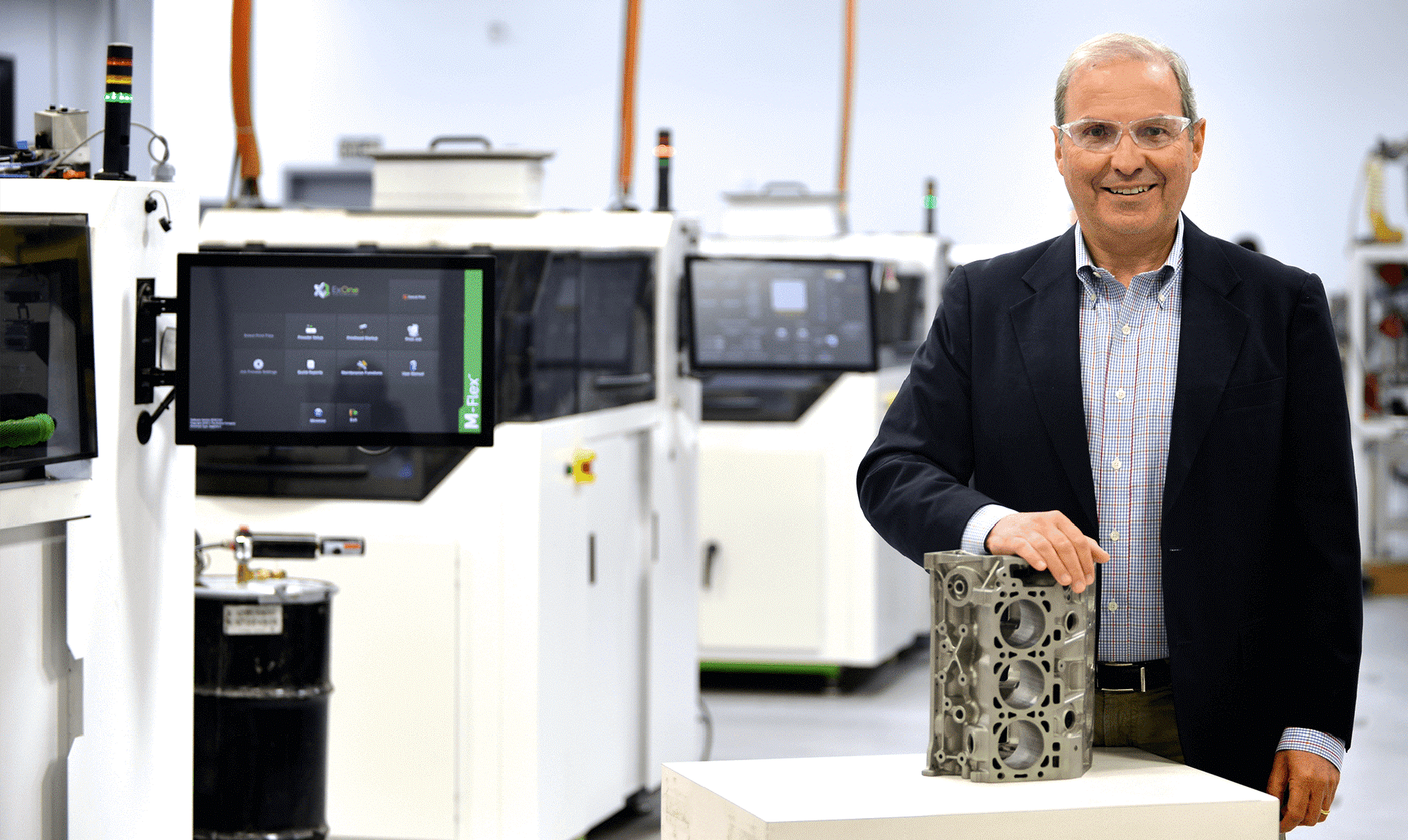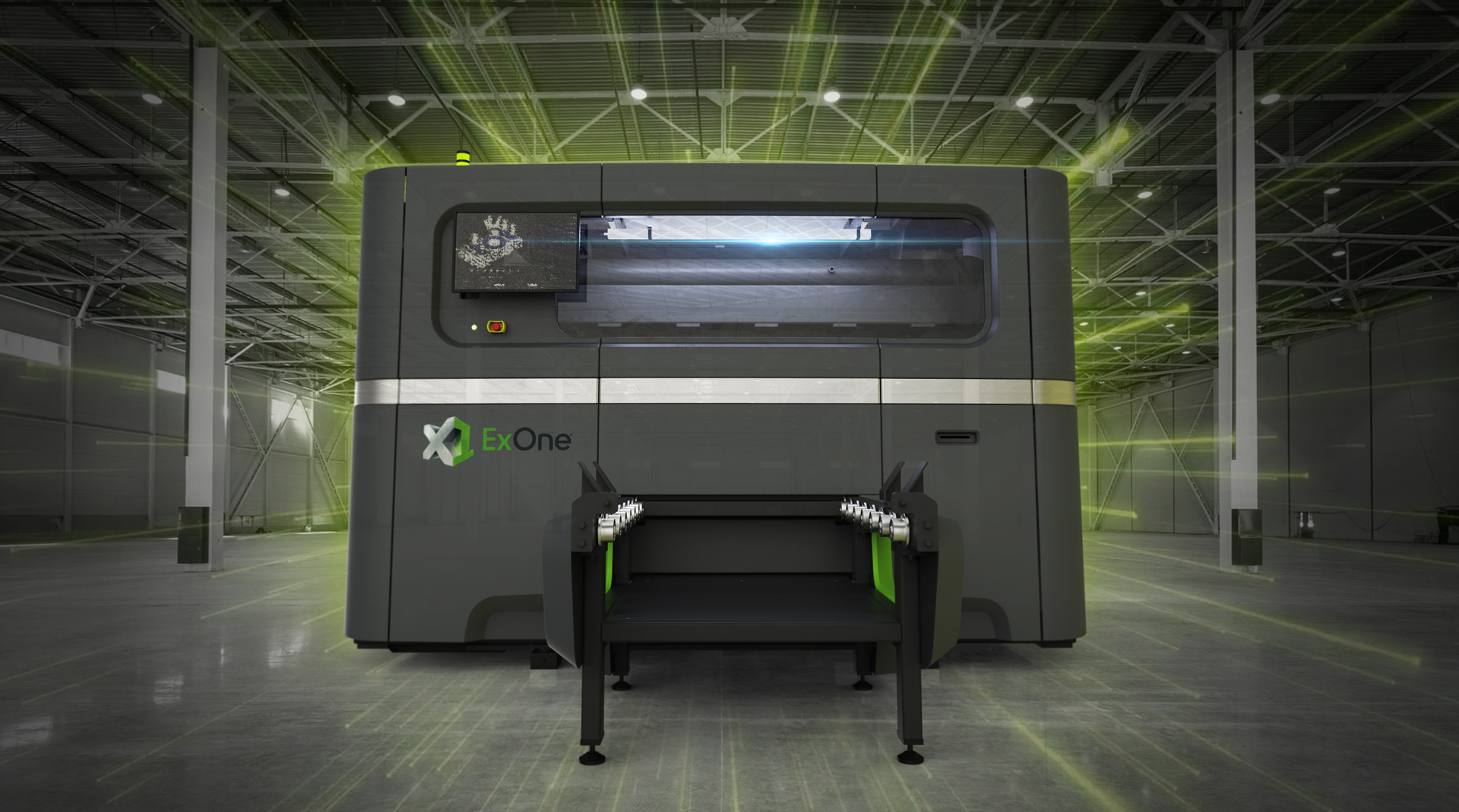Still affected by the pandemic-related slowdown, binder jet 3D printer manufacturer ExOne reported a loss of $6.1 million for its first quarter of 2021, almost double the loss in the first quarter of 2020. At the same time, company shares dropped more than 12% in late trading after the period’s results were announced on May 17, 2021.
Nonetheless, the North Huntingdon, Pennsylvania-based company is looking forward to an economic rebound, particularly in the U.S. market, where it registered a higher concentration of sales and backlog growth for the quarter. ExOne is also counting on future sales from its recently launched office-friendly ExOne Metal Designlab 3D printer, as well as its reactive aluminum and titanium binder jetting materials for its largest metal binder jetting platforms.
Total net losses were $6.1 million or 29 cents per share, compared with a net loss of $3.6 million or 22 cents per share last year. The results missed analyst estimates that anticipated a loss of 22 cents per share for the period. As for revenue, it dipped just below the record $13.4 million a year earlier to $13 million, primarily due to COVID-19 related installation challenges. The company said this decrease was mainly driven by a 22% drop in demand for 3D printing machines, with only seven units sold versus 14 printers in the first quarter of 2020.
Fortunately, it was offset by an increase of 15% year-over-year in recurring revenue from 3D printed and other products, materials, and services. Still, the impacts from the pandemic, including disruptions to domestic and international shipping and travel, in addition to adverse macroeconomic effects, particularly in Europe and Asia, continue to affect the business.
After announcing the earnings report for the first three months of the year, ExOne CEO John Hartner indicated he was pleased to “report record levels of both recurring revenue and machine order backlog” and said it is a sign of strength for the company. Hartner is eager to start the post-pandemic period with “new tailwinds” as manufacturers look to “de-risk supply chains” and improve their products’ sustainability with new designs that require industrial 3D printing solutions.
Other quarterly highlights are also driving confidence at ExOne, including the launch of the ExOne Metal Designlab through an exclusive partnership with Rapidia. The printer has diversified and strengthened ExOne’s metal portfolio beyond binder jetting to include its first office-friendly bound metal 3D printer. Made with HydroFuse technology, an innovative water-based paste containing metal or ceramic powders, the system eliminates the need for a debinding unit and also shortens sintering times by days.
Seeking to strengthen its position as a market leader, ExOne increased investment in innovation, continuous improvement, manufacturing capacity, and training surrounding ExOne’s production-ready metal 3D printers. In fact, research and development expenses were $2.6 million, compared to $2.5 million in the first quarter of 2020. The increase was primarily due to additional material costs associated with systems and materials development of binder jetting technology. This includes the planned market launch of the X1 160Pro production metal 3D printing system and InnoventPro advanced entry-level metal 3D printing system in 2021.
ExOne also announced that reactive materials such as aluminum and titanium would be printable on a controlled-atmosphere model of the X1 160Pro metal system in 2022. To support its metal printer production acceleration, the manufacturer will grow its global workforce by 15% in 2021. The move adds to the expansion of its global sales distribution network, four new experienced additive sales partners (with more than 60 offices in the U.S. and Canada), and a doubling of the sales network in the greater China region. The significant shift could help convert backlog to revenue and meet growing customer demands much quicker.
While there are still some remaining challenges from COVID-19, particularly in Europe and Asia, Hartner said he is confident that the remainder of 2021 will be the beginning of ExOne’s next growth phase. Clear signs of a broader economic recovery on the horizon, a record contractual backlog, and an expanded product portfolio and distribution network contributed to Hartner’s vision for the company’s future. Strategic investments in additional growth opportunities will continue, which probably means more partnerships and acquisitions, as the recent buy-out of Ohio-based tooling startup Freshmade 3D.
Subscribe to Our Email Newsletter
Stay up-to-date on all the latest news from the 3D printing industry and receive information and offers from third party vendors.
Print Services
Upload your 3D Models and get them printed quickly and efficiently.
You May Also Like
Nikon SLM Solutions Sells SLM 500 to Primary Weapon Systems to Expand Suppressor Production
Primary Weapons Systems (PWS) is a Boise, Idaho-based manufacturer of suppressors, firearms, and related components. A subsidiary of Vigilant Gear and a sister company to aftermarket Glock slide manufacturer Lone...
3DPOD 261: Tooling and Cooling for AM with Jason Murphy, NXC MFG
Jason Murphy´s NXC MFG (Next Chapter Manufacturing) is not a generalist service; instead, the company specializes in making tooling. Using LPBF and binder jet, the company produces some of the...
HP and Firestorm Labs Form Partnership to Use Multi Jet Fusion 3D Printers in Deployable Factories
HP Inc., maker of a range of additive manufacturing (AM) solutions including the Multi Jet Fusion (MJF) ecosystem, has announced a partnership with Firestorm Labs, a developer of containerized, deployable...
3D Printing News Briefs, July 2, 2025: Copper Alloys, Defense Manufacturing, & More
We’re starting off with metals in today’s 3D Printing News Briefs, as Farsoon has unveiled a large-scale AM solution for copper alloys, and Meltio used its wire-laser metal solution to...



































